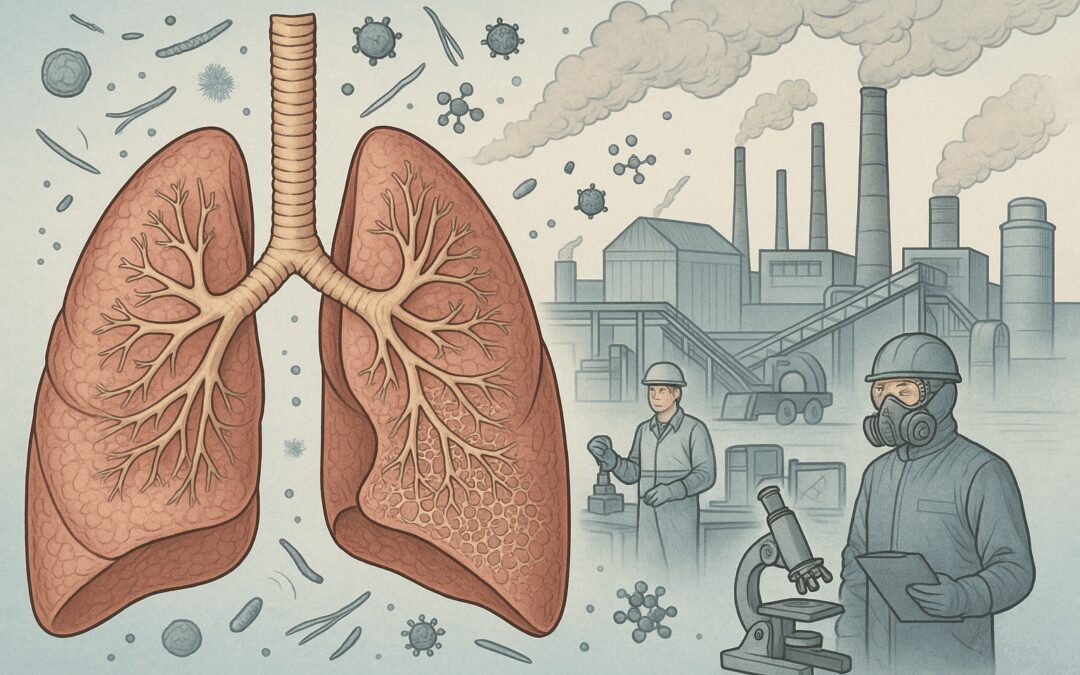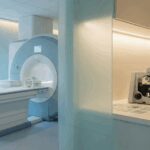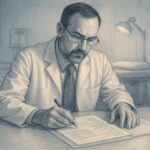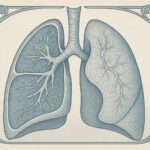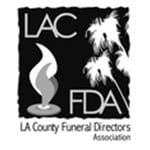Uncovering Hidden Truths Through Scientific Investigation
Sarah worked in a textile factory for thirty-seven years. Each day, she breathed air filled with invisible fibers that settled deep into her lungs. When she passed away from respiratory complications, her family wondered if her workplace had contributed to her death. Through postmortem examinations, they discovered the truth that would protect countless other workers.
Postmortem examinations serve as powerful tools in understanding how environmental factors and occupational hazards impact human health. These scientific investigations reveal connections between workplace exposures and disease patterns that might otherwise remain hidden. Medical examiners use these findings to build comprehensive databases that guide public health policies and protect future workers.
The Critical Role of Lung-Only Autopsies in Occupational Health
Lung-only autopsies represent a specialized approach to postmortem investigation that focuses specifically on respiratory system analysis. This targeted examination provides detailed information about how occupational exposures affect lung tissue over time. The procedure allows pathologists to identify specific substances that have accumulated in lung tissue throughout a person’s working life.
Environmental health research relies heavily on data gathered through these focused examinations. Scientists can trace exposure patterns by analyzing tissue samples for various industrial chemicals, dust particles, and toxic substances. The information gathered helps researchers understand dose-response relationships and establishes causal links between workplace conditions and respiratory diseases.
Occupational health studies benefit enormously from lung-only autopsy data. Research teams can examine tissue samples from workers in specific industries to identify common exposure patterns. This research contributes to developing better protective equipment and establishing safer workplace standards.
Advancing Workplace Safety Through Scientific Evidence
Workplace safety improvements often stem from findings discovered during postmortem examinations. When multiple cases from the same industry show similar pathological changes, safety experts can identify specific hazards and implement targeted prevention strategies. These investigations have led to the development of improved ventilation systems, better protective equipment, and stricter exposure limits for dangerous substances.
Occupational exposure analysis through autopsy findings helps create comprehensive risk assessment profiles for different industries. Companies can use this information to modify their safety protocols and protect current employees from known hazards. The evidence gathered through these examinations often leads to policy changes that benefit entire industries.
Medical Research and the Autopsy Role in Medical Science
Medical research autopsies contribute invaluable data to our understanding of occupational diseases. Research institutions collaborate with medical examiners to study how environmental factors contribute to disease development. These partnerships have advanced our knowledge of respiratory disease mechanisms and improved treatment approaches for affected patients.
Respiratory disease investigation through postmortem examination reveals the progression patterns of occupational lung diseases. Pathologists can observe how different substances cause specific types of tissue damage and inflammation. This information helps clinicians develop better diagnostic techniques and treatment protocols for living patients with similar exposures.
The autopsy role in medical science extends beyond individual cases to benefit entire communities. Research findings from postmortem examinations contribute to peer-reviewed publications that inform medical professionals worldwide. These studies help establish diagnostic criteria for occupational diseases and improve clinical care standards.
Detecting Environmental Hazards Through Scientific Analysis
Toxic substance detection represents one of the most crucial aspects of environmental health postmortem examinations. Advanced laboratory techniques can identify minute traces of industrial chemicals, heavy metals, and other hazardous materials in tissue samples. This detection capability allows researchers to establish exposure timelines and identify previously unknown health risks.
Occupational lung disease patterns emerge through systematic analysis of autopsy findings across different industries and geographic regions. Epidemiologists use this data to identify emerging health threats and track the effectiveness of safety interventions. The information helps public health officials allocate resources and develop targeted prevention programs.
Workplace Hazard Identification and Prevention
Workplace hazard identification through postmortem examination data helps companies understand the long-term health impacts of their operations. Safety managers can review autopsy findings from former employees to identify potential problems with current workplace practices. This proactive approach allows companies to address hazards before they cause additional health problems.
Environmental monitoring programs often incorporate findings from postmortem examinations to guide their sampling strategies. When autopsy results indicate exposure to specific substances, environmental health specialists can focus their monitoring efforts on those particular hazards. This targeted approach makes monitoring programs more effective and cost-efficient.
Legal Protections and Health Cases
Legal protections in health cases often depend on scientific evidence gathered through postmortem examinations. Families seeking compensation for occupational diseases rely on autopsy findings to establish causation between workplace exposures and health outcomes. The detailed documentation provided by these examinations strengthens legal cases and helps ensure fair compensation for affected families.
Attorney teams working on occupational health cases collaborate closely with medical examiners to understand the scientific evidence. The testimony of pathologists who performed these examinations carries significant weight in legal proceedings. Their expertise helps juries understand complex medical concepts and the relationship between workplace exposures and disease development.
Public Health Safety Measures and Policy Development
Public health safety measures benefit directly from data collected through postmortem examinations. Health departments use autopsy findings to identify disease clusters and investigate potential environmental causes. This surveillance capability helps protect communities from emerging health threats and guides resource allocation for prevention programs.
Regulatory agencies rely on autopsy data to establish exposure limits and safety standards for various industries. The scientific evidence gathered through these examinations provides the foundation for evidence-based policy decisions. These policies protect millions of workers from known health hazards and prevent future occupational disease outbreaks.
Protecting Future Generations Through Scientific Knowledge
Future generations health protection depends on the knowledge gained through current postmortem examinations. Each case contributes to our understanding of how environmental factors affect human health over time. This accumulated knowledge helps scientists identify emerging threats and develop prevention strategies before widespread exposure occurs.
Research institutions maintain tissue banks that preserve samples from postmortem examinations for future study. As analytical techniques improve, researchers can reanalyze historical samples to identify previously undetectable substances. This capability ensures that today’s investigations continue to contribute to scientific knowledge for decades to come.
The Intersection of Individual Cases and Population Health
Individual autopsy cases contribute to broader population health initiatives through systematic data collection and analysis. Public health researchers aggregate findings from multiple cases to identify trends and patterns that might not be apparent in individual examinations. This population-level analysis helps identify emerging health threats and guides prevention efforts.
Community health assessments often incorporate postmortem examination data to understand local environmental health risks. Health departments can identify geographic clusters of specific diseases and investigate potential environmental causes. This information helps communities address local health hazards and protect residents from preventable diseases.
Technology and Innovation in Postmortem Environmental Health Research
Advanced analytical techniques continue to improve the quality and scope of information gathered through postmortem examinations. High-resolution imaging systems allow pathologists to observe tissue changes at the cellular level. Sophisticated chemical analysis equipment can detect trace amounts of substances that were previously undetectable.
Artificial intelligence applications are beginning to assist pathologists in pattern recognition and data analysis. These tools can help identify subtle changes in tissue samples that might be missed by human observation alone. The integration of technology with traditional autopsy techniques enhances the diagnostic capabilities of medical examiners.
Building a Safer Future Through Scientific Investigation
The importance of postmortem examinations in environmental and occupational health extends far beyond individual cases. These investigations provide the scientific foundation for policies and practices that protect workers and communities from environmental health hazards. Each examination contributes to a growing body of knowledge that helps create safer workplaces and healthier environments for future generations.
Through systematic investigation and careful analysis, medical examiners continue to uncover the hidden connections between environmental exposures and human health. Their work provides families with answers, helps companies improve their safety practices, and contributes to the scientific knowledge that protects us all. The dedication to uncovering truth through scientific investigation ensures that each case contributes to a safer and healthier future for everyone.
Frequently Asked Questions
What makes lung-only autopsies different from full postmortem examinations?
Lung-only autopsies focus specifically on respiratory system analysis rather than examining all organ systems. This targeted approach allows pathologists to conduct detailed investigations of lung tissue, identifying specific substances and damage patterns related to occupational or environmental exposures. The procedure takes less time than a full examination while providing comprehensive information about respiratory health impacts.
How do postmortem examinations contribute to workplace safety improvements?
Postmortem examinations reveal patterns of occupational disease that help safety experts identify specific workplace hazards. When multiple cases from the same industry show similar pathological changes, companies can implement targeted prevention strategies. These findings have led to improved ventilation systems, better protective equipment, and stricter exposure limits for dangerous substances.
Can family members request an occupational health-focused autopsy?
Yes, families can request postmortem examinations that focus on occupational health concerns. This process typically involves discussing the deceased person’s work history with the medical examiner to determine appropriate examination protocols. Families should provide detailed information about workplace exposures, job duties, and any known health concerns related to employment.
What types of toxic substances can be detected through lung tissue analysis?
Advanced laboratory techniques can identify numerous hazardous materials including asbestos fibers, silica dust, heavy metals, industrial chemicals, and various airborne toxins. Pathologists can detect these substances even decades after initial exposure. The analysis helps establish exposure timelines and identify previously unknown health risks associated with specific workplace environments.
How long does occupational exposure analysis take to complete?
The timeline varies depending on the complexity of the case and the types of analysis required. Basic tissue examination typically takes several days, while specialized chemical analysis and fiber identification can take several weeks. Families receive preliminary findings relatively quickly, with comprehensive reports following once all laboratory testing is complete.
Do autopsy findings influence legal cases involving occupational diseases?
Postmortem examination findings provide crucial scientific evidence in legal cases involving occupational diseases. The detailed documentation helps establish causation between workplace exposures and health outcomes. Pathologist testimony carries significant weight in legal proceedings, helping families secure compensation and holding employers accountable for unsafe workplace conditions.
How do these examinations benefit future workers in similar industries?
Each postmortem examination contributes to databases that guide public health policies and workplace safety standards. Research findings help identify emerging health threats, improve protective equipment design, and establish safer exposure limits. This accumulated knowledge protects future workers from known hazards and prevents occupational disease outbreaks.
What information should families provide about the deceased person’s work history?
Families should compile comprehensive work histories including job titles, employers, duration of employment, specific tasks performed, and known exposures to chemicals or hazardous materials. Information about protective equipment use, workplace safety practices, and any work-related health concerns proves valuable for guiding the examination process.
Are tissue samples preserved for future research purposes?
Many institutions maintain tissue banks that preserve samples for future scientific study. As analytical techniques improve, researchers can reanalyze historical samples to identify previously undetectable substances. Families can choose whether to allow tissue samples to be used for research purposes that may benefit future generations.
How do medical research autopsies differ from standard examinations?
Medical research autopsies involve additional tissue collection and analysis protocols designed to contribute to scientific knowledge. These examinations may include specialized testing procedures and collaboration with research institutions. The findings contribute to peer-reviewed publications and help advance our understanding of occupational disease mechanisms.
What role do these examinations play in environmental health monitoring?
Postmortem examinations help identify disease clusters and investigate potential environmental causes. Health departments use autopsy findings to guide environmental monitoring programs and focus resources on specific hazards. This surveillance capability helps protect communities from emerging health threats and guides prevention efforts.
Can autopsy findings lead to changes in industry safety standards?
Yes, regulatory agencies rely on autopsy data to establish exposure limits and safety standards for various industries. The scientific evidence gathered through these examinations provides the foundation for evidence-based policy decisions that protect millions of workers from known health hazards and prevent future occupational disease outbreaks.

